John Singleton Copley Biography
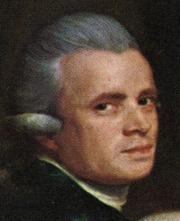
John Singleton Copley was born into the family of an Irish immigrant named Richard Copley and his wife Mary Singleton Copley. Though no record of the birth was made, the date is believed to have been July 3, 1738. His parents owned and ran a tobacco shop in Boston. By 1748, Richard Copley had died, though the exact date of this is also unknown, but on May 22, 1748 his widow married Peter Pelham, an engraver and teacher, and moved with her son to a quieter and more respectable part of Boston.
Copley’s stepfather, Peter Pelham, played an enormous part in the future artist’s education. First of all, general education – reading, writing and math – were available right at home in Pelham’s school. Most importantly, however, Copley had the opportunity to work in his stepfather's shop, where he was taught the art of engraving, as well as forming friendly contacts with several Boston-based painters, whose studios Copley could visit. Unfortunately, this situation did not last long – Peter Pelham died in 1751 when Copley was only 13.
The boy pursued the artistic trade. All alone, he learnt from engravings of artwork from Europe, imitating them and borrowing different elements to create his own works, from dress to landscapes in the background. At the age of 15 Copley started his career as a portraitist. His earliest works, such as a portrait of his stepfather Peter Pelham (1753), or the portrait of his stepbrother Charles Pelham and the portrait of Mrs. Joseph Mann (1753) are still immature and stiff, and depended on liberal borrowing from other artists' work, but nevertheless are impressive if we take into consideration the young painter's age and training.
In 1755 the British painter Joseph Blackburn, settled in Boston, bringing with him the latest European fashion: Rococo. Learning first hand from live paintings was the next stage in Copley’s artistic development. Very quickly, he picked up the skill of depicting graceful poses and rendering rich draperies and jewelry.
By 1758, Copley had produced about 40 portraits, which record his rapid progress in mastering the craft. During these years he came to the attention of high Boston society. One of the best works of the first five years of his career is the double portrait of two sisters, Mary MacIntosh Royall and Elizabeth Royall, daughters of one of the wealthiest New England citizens, Isaac Royall. With his depictions of beautiful girls, fine lace, the folds of silk dresses and background draperies, the 20-year-old painter was showing off, eager to demonstrate his skills at rendering texture.
In the early 1760s, Copley tried his hand at pastels, a media very popular at the time, and his pastel portraits rank among the very best of the 18th century. By the mid-1760s Copley had become famous not only in his native Boston, but also throughout colonial America. He received invitations to travel to Philadelphia, New York and Canada, but always refused politely, having a lot of commissions at home. He was now also looking for recognition in the old world.
Copley was introduced to the London public at the exhibition of the Incorporated Society of Artists in 1766. His entry “Boy with Squirrel” was the first picture painted in America to be exhibited abroad. Boy with Squirrel is a portrait of Copley’s half brother, Henry Pelham. Painted in 1765, it was based on a sketch from around 1758 when the sitter was nine. The picture was welcomed and praised both by the public and artistic critics. The painter was accepted to the Society of Artists of Great Britain and invited to London. Inspired by this success, the next year Copley sent the Young Lady with a Bird and Dog (sometimes known as Mary Warner) to the Society’s exhibition. This picture, however, was met negatively, which made it obvious to Copley that in order to become a great painter by European standards he would have to come to Europe to study its art first hand. Despite his wish to study in Europe, Copley could not just pack up and go – there were commissions to be fulfilled and he might have been afraid to risk his financial well-being and good standing as a leading painter in the colonies.
On November 17, 1769, he married Susanna Farnham Clarke, the daughter of Richard Clarke, one of Boston’s richest merchants and local agent for the British East India Company. Their union was destined to last 45 years and to produce six children.
In May 1771, Copley and his wife went to New York on the invitation of Captain Stephen Kemble, a British Army Officer stationed on Manhattan Island. Copley worked in New York for 7 months, producing about 37 oil portraits. Unfortunately, most of his New York portraits vanished when their owners, mostly loyalists, fled the country at the outbreak of the Revolution in 1775. At one point during his busy stay, Copley found time for a two-week trip to Philadelphia to see Allen’s collection of paintings. Copley and his wife were back in Boston in January of 1772.
The early 1770s were a time of constant discontent and violent outbreaks in the American colonies. Having many friends among both loyalists and revolutionaries, Copley did not want to take sides, but he could not, however, entirely escape the effects of the growing unrest around him.
The history-making Boston Tea Party of December 16, 1773, drove his father-in-law to the brink of bankruptcy. The unstable political situation made Copley’s services as a painter unneeded for a while, and he at last made the decision to travel to Europe. On June 10, 1774 Copley departed for England. He sailed alone, without his family, clearly intending, as soon as the troubles were over, to return to his flourishing practice as America’s leading portrait painter, but the long and bloody War of Independence which broke out soon after his departure, forced him to postpone his return. After the war ended, Copley financial situation no longer permitted a return, and the painter ended up staying in Britain forever.
By the time Copley left America, he had painted about 350 portraits, of which 312 still exist today.
Copley arrived in England on July 9, 1774. After 6 weeks there, he set out for the continent, first stopping in Paris, and eventually reaching Genoa and Rome. His first work in Europe was rather surprising for a Puritan painter – The Ascension of Christ. After such an unexpected subject Copley returned to portraiture with his rather pompous family portrait of Mr and Mrs Ralph Izard, an American couple whom he met in Italy. The portrait, in Copley’s usual manner, features a large number of antique accessories and has a view of the Colosseum in the background.
After 7 months in Rome, Copley returned to England, eager to put to practice all his new knowledge. In London he reunited with his family, who had left war-ravaged North America. At the Academy’s exhibition in 1776, Copley entered his Italian work, the portrait of the Izards. It attracted no special notice, but thanks to the earlier success of his Boy with a Squirrel and Benjamin West’s efforts on his behalf, Copley was elected an Associate of the Academy.
In 1778, Copley produced his first historical picture, Watson and the Shark, commissioned by Brook Watson, a well-to-do merchant and the future Lord Mayor of London. The painting depicts an incident that happened when Watson was 14: swimming in the waters off Havana, Cuba, he was attacked by a shark that bit off his leg. The picture was praised by both the public and critics.
Almost at once, Copley started another historical painting - The Collapse of the Earl of Chatham. The subject was William Pitt (1708-1778), the 1st Earl of Chatham, the British Whig statesman, who had been England’s Secretary of State and later its Prime Minister. On April 7, 1778, in the House of Lords, Chatham sat listening as a fellow member of Parliament, the Duke of Richmond, made a speech calling for George III to withdraw troops from the colonies and to recognize American independence. As the aged and frail Chatham rose to protest, he collapsed, the victim of a stroke, dying a month later. Copley worked on the picture for two years. Foreseeing the picture’s popularity and hoping to profit from it, the painter ordered a large engraving of it and sold 2,500 advance subscriptions for the prints. He also decided not to exhibit the painting at the Royal Academy, but in separate quarters, charging an admission fee. During the 10 weeks that the painting was on display, some 20,000 people came to see it. This incident was a cause of much tension between Copley and his fellow Academicians, West included.
Copley’s next historical painting was commissioned by the influential London alderman and print publisher John Boydell. The picture revived another episode in contemporary history – the death of the young British commander, Major Francis Peirson at the moment of his victory over invading French troops on the British-held Channel island of Jersey in 1781. The picture was also exhibited independently and for a fee, further vexing the Royal Academy and Copley’s colleagues.
By 1790 Copley finished his monumental Siege of Gibraltar. Its display drew enormous crowds, but critics were unenthusiastic.
Faced with the resentment from London art circles, Copley was going through a hard time. The rivalry with his compatriot and former friend Benjamin West had turned into open hostility. With Reynolds’ death in 1792, West had been elected president of the Royal Academy. Copley himself had aspired to the post and thereafter disagreed with West over every Academy issue and intrigued against West at every opportunity. He was fast losing most of his other friends.
After the critical response to The Siege of Gibraltar, Copley produced several other history paintings in the hopes of repeating the success of Watson and The Death of Chatham. However, he produced few notable works.
On September 9, 1815, Copley died of a stroke in his London home at the age of 77.
Bibliography
The World of Copley. 1738-1815 by Alfred Frankenstein. Time-Life Books. 1970
The Yale Dictionary of Art and Artists by Erika Langmuir and Norbert Lynton.2000.
America's Old Masters: Benjamin West, John Singleton Copley, Charles Wilson Peale and Gilbert Stuart by James Thomas Flexner. Dover Publications, 1994.
John Singleton Copley in America by Carrie Rebora, Paul Staiti. Metropolitan Museum of Art, 1995.
Art In A Season Of Revolution: Painters, Artisans, And Patrons In Early America by Margaretta M. Lovell. University of Pennsylvania Press, 2005.
John Singleton Copley by James Thomas Flexner. Fordham University Press, 1993.
- Charles Pelham.

1753-54. Oil on canvas. Private collection.
- Mrs. Joseph Mann (Bethia Torrey).
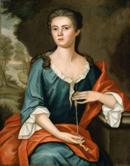
1753. Oil on canvas. 91 x 72 cm. The Museum of Fine Arts, Boston, MA, USA.
- Mary Macintosh Royall And Elizabeth Royall.

c.1758. Oil on canvas. The Museum of Fine Arts, Boston, MA, USA.
- Isaac Royall.
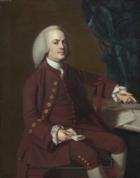
1769. Oil on canvas. 127 x 101 cm. The Museum of Fine Arts, Boston, MA, USA.
- Boy With Squirrel (Henry Pelham).

1765. Oil on canvas. The Museum of Fine Arts, Boston, MA, USA.
- Young Girl With A Bird And Dog.

1767. Oil on canvas. The Toledo Museum of Art, Ohio, USA.
- Ascension.
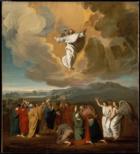
1775. Oil on canvas. 81 x 73 cm. The Museum of Fine Arts, Boston, MA, USA. Read Note.
- Mr. And Mrs. Ralph Izard (Alice Delancey).
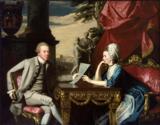
1775. Oil on canvas. 174 x 223 cm. The Museum of Fine Arts, Boston, MA, USA. Read Note.
- Watson And The Shark.
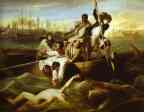
1778. Oil on canvas. The National Gallery of Art, Washington, DC, USA.
- The Collapse Of The Earl Of Chatham In The House Of Lords, 7 July 1778.
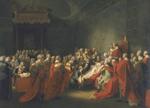
1779-80. Oil on canvas support: 2286 x 3073 mm Tate Gallery, London, UK.
- The Death Of Major Peirson, 6 January 1781.
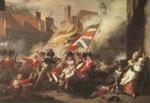
1783. Oil on canvas, support: 2515 x 3658 mm. Tate Gallery, London, UK.